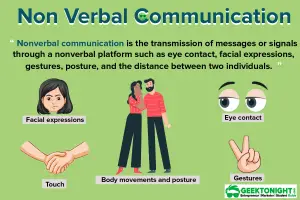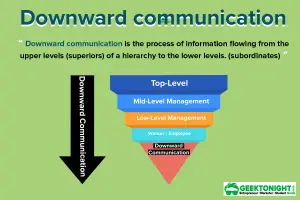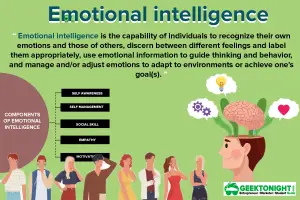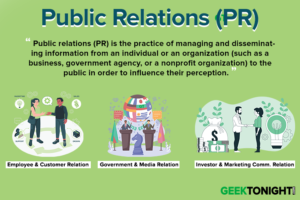Cultures across the globe are increasingly getting more and more connected and the business world is becoming global. For managers, this infers that they should deftly be able to work along with a large number of employees belonging to various countries or ethnic cultures. Cultural differences can create barriers to communication and the barriers could preclude a person to establish connections and motivate others.
Table of Content
Hofstede’s Dimensions of Cultural Differences
Hofstede’s dimensions of cultural differences is a framework used to discern the differences in culture across countries and to understand the ways that business is run across different cultures. In other words, this framework is used to draw comparisons between different national cultures, the dimensions of culture, and gauge their impact on a business setting.
Hofstede mentioned six categories that define culture, which are as follows:
Power Distance Index
It is defined as the level to which the less powerful members of organisations accept and think that there is imbalance in distribution of power. In this dimension, inequality and power are viewed from the perspective of low-level employees. A high level of power distance shows that there is centralisation of power and there is an unequal distribution of power, whereas low- power index exhibits that power is equally and evenly distributed.
For example, if in an organisation has an authoritative style of management, then there is a high power distance index because top-level employees will hold more power and authority.
Individualism
It refers to the extent to which employees of an organisation are integrated or level of belongingness exists among them. A high degree of individualism means there is dearth of interpersonal connections in the organisation.
Meanwhile, a low de- gree of individualism which is called collectivism infers there is a strong bond or loyalty among employees. For example, in an organisation, employees tend to remain isolated and less interaction happens between them. So there is a high degree of individualism in the organisation.
Masculine
This dimension revolves around what values are deemed more important. The masculine aspect of this dimension exhibits inclination towards achievement, heroism, assertiveness and material rewards for success. The opposite to this is femininity, which shows propensity for cooperation, modesty, caring for the weak and quality of life.
For example, Japan is considered to be a masculine country as they are assertive and strict to their values whereas countries such as Norway and Sweden are considered highly feminine as they are modest and cooperative.
Uncertainty Avoidance
This dimension talks the extent to which the employees of an organisation feel uncomfortable with uncertainty and ambiguity. The uncertainty index used to check the tolerance-bearing level of employees towards comfortable and ambiguous situations. A high uncertainty avoidance index will depict less tolerance to uncertainty, ambiguity and risk-taking. The lower the uncertainty avoidance index, the higher will be the tolerance-bearing capacity for uncertainty, ambiguity and risk-taking.
For example, countries such as India and Japan tend to abide by society structures, standards and rules. They refrain from deviating from rules as it is considered undesirable.
Long Term Orientation
This dimension talks about to what extent employees value traditions and how they manage long-term or short-term goals or challenges. If employees have a long-term orientation, they tend to sacrifice short-term success or gratification in order to attain long-term success.
On the other hand, employees with short-term orientation lay strong emphasis on the present or near future. Such employees prefer short-term success or achieving short-term goals.
For example, Ajay was preparing for an important upcoming exam. However, his friends were coercing him to travel with them. Ajay decided to sacrifice travel plans and concentrate on studies as it will shape his career in the long run. So, Ajay had long-term orientation.
Benett’s Stages of Intercultural Sensitivity
Bennett’s intercultural sensitivity is a framework formulated to shed light on different ways in which people react to cultural differences. The Bennett scale, also known as the Developmental Model of Intercultural Sensitivity (DMIS) underscores cognitive orientations individuals use to discern cultural differences.
The Bennett scale explains various stages of intercultural sensitivity. The stages offer a cogent foundation to identify how to improve intercultural sensitivity in organisations.
Various stages of the Benett’s intercultural sensitivity are as follows:
Denial
The first stage is that of denial. At this stage, a person may find that only his/her own beliefs, values and behaviour are real. The person may either not respect other cultures at all or fail to see the cultural difference. At times a person at this stage is inconsiderate towards people of other cultures. In order to overcome the stage of denial, one ought to acknowledge and respect the existence of other cultures.
For example, a person of a certain religion may feel that his religion is the best and demean other religions.
Defence
At this stage, a person may feel that his/her own culture is the most evolved or the best culture. A person at this juncture may feel threatened by other cultures and tend to develop negative stereotyping. At this stage, a person may be over-critical of other cultures and feel threatened by cultural difference and is likely to act aggressively against it.
For example, a person living in a country may feel threatened by immigrants culture or values.
Minimisation
At this stage, a person acknowledges common features between his culture and the person belonging to other cultures. A person at this juncture will start to recognise that all humans are humans, irrespective of what traditions and cultures they have.
For example, an Indian trying to know about the culture of his team members’ countries in order to relate or connect with them.
Acceptance
At this stage, a person realises that it is natural for humans to hail from culturally different backgrounds. In this stage, a person is able to acknowledge and honour cultural difference through both behaviours and values. This stage mentions that a person’s own culture is just one of the many cultures that prevail in the world. People at this stage are curious about learning other cultures and respect cultural differences.
For example, a person acknowledges differences in culture and thinks he can learn good things from other cultures.
Adaptation
At this stage, a person tends to expand his horizon and develop empathy and understanding for people of other cultures. The person acts appropriately with people of other cultures and begins to see the world from the perspective of other cultures too.
For example, a person modifies his behaviour and adapts to cultural diversity.
Integration
This is the last stage wherein a person is able to develop cultural sensitivity. A person will have multiple perspectives and even act as a culture mediator. At this stage, a person assists others to understand different cultures and fosters unity among people of various cultures.
For example, a person tends to blend aspects from other cultures with his own culture.
Business Communication Notes
(Click on Topic to Read)
- What is Business Communication?
- What is Communication?
- Types of Communication
- 7 C of Communication
- Barriers To Business Communication
- Oral Communication
- Types Of Non Verbal Communication
- What is Written Communication?
- What are Soft Skills?
- Interpersonal vs Intrapersonal communication
- Barriers to Communication
- Importance of Communication Skills
- Listening in Communication
- Causes of Miscommunication
- What is Johari Window?
- What is Presentation?
- Communication Styles
- Channels of Communication
- Hofstede’s Dimensions of Cultural Differences and Benett’s Stages of Intercultural Sensitivity
- Organisational Communication
- Horizontal Communication
- Grapevine Communication
- Downward Communication
- Verbal Communication Skills
- Upward Communication
- Flow of Communication
- What is Emotional Intelligence?
- What is Public Speaking?
- Upward vs Downward Communication
- Internal vs External Communication
- What is Group Discussion?
- What is Interview?
- What is Negotiation?
- What is Digital Communication?
- What is Letter Writing?
- Resume and Covering Letter
- What is Report Writing?
- What is Business Meeting?
- What is Public Relations?
Business Communication Notes
(Click on Topic to Read)
- What is Business Communication?
- What is Communication?
- Types of Communication
- 7 C of Communication
- Barriers To Business Communication
- Oral Communication
- Types Of Non Verbal Communication
- What is Written Communication?
- What are Soft Skills?
- Interpersonal vs Intrapersonal communication
- Barriers to Communication
- Importance of Communication Skills
- Listening in Communication
- Causes of Miscommunication
- What is Johari Window?
- What is Presentation?
- Communication Styles
- Channels of Communication
- Hofstede’s Dimensions of Cultural Differences and Benett’s Stages of Intercultural Sensitivity
- Organisational Communication
- Horizontal Communication
- Grapevine Communication
- Downward Communication
- Verbal Communication Skills
- Upward Communication
- Flow of Communication
- What is Emotional Intelligence?
- What is Public Speaking?
- Upward vs Downward Communication
- Internal vs External Communication
- What is Group Discussion?
- What is Interview?
- What is Negotiation?
- What is Digital Communication?
- What is Letter Writing?
- Resume and Covering Letter
- What is Report Writing?
- What is Business Meeting?
- What is Public Relations?












